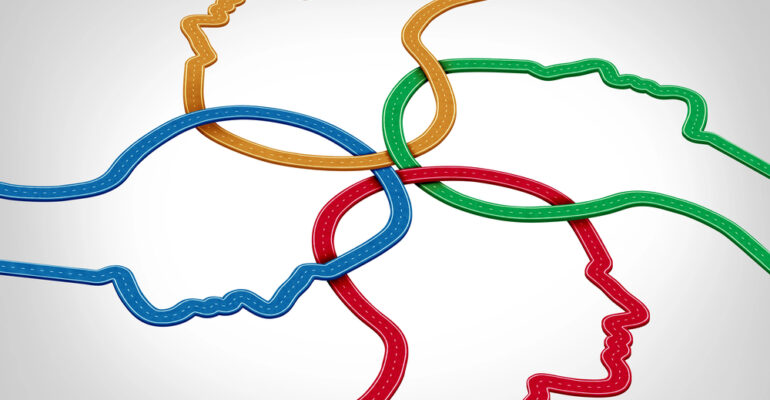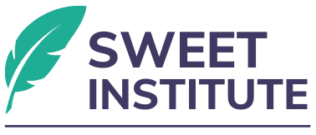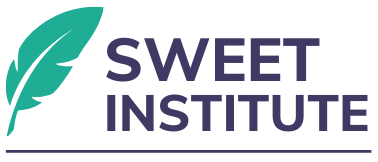Stages of Change in Action: Tailoring Collaboration to Level of Preparedness in Populations with High-Acuity Needs

Stages of Change in Action: Tailoring Collaboration to Level of Preparedness in Populations with High-Acuity Needs
Authors
Frederick Shack, LMSW1,4
Mardoche Sidor, MD1,2,3
Jose Cotto, LCSW1,5
Karen Dubin, PhD, LCSW2,4
Lesmore Willis Jr, MPA, MHA1
Gary Jenkins, MPA1
Affiliations
1Urban Pathways, New York, NY
2SWEET Institute, New York, NY
3Columbia University Center for Psychoanalytic Study and Research, New York, NY
4Columbia University, Department of Social Work, New York, NY
5New York University, Department of Social Work, New York, NY
Correspondence concerning this article should be addressed to Mardoche Sidor, MD, Urban Pathways, at msidor@urbanpathways.org
Abstract
Collaboration is most effective when interventions are matched to an individual’s stage of change. The Transtheoretical Model (Prochaska & DiClemente, 1984) provides a roadmap for understanding precontemplation, contemplation, preparation, action, maintenance, and termination. For populations with high-acuity needs, such as individuals experiencing homelessness, serious mental illness, trauma reactivity, and substance use disorders, mismatches between staff interventions and resident level of preparedness often lead to disengagement. This article situates the “Collaborating” stage of the Four-Stage Engagement Model within the Stages of Change framework, demonstrating how staff can tailor engagement strategies accordingly. Composite case studies from Urban Pathways illustrate how stage-matched collaboration has the potential to reduce resistance, increase trust, and promote sustained progress.
Keywords
Stages of Change, Transtheoretical Model, Collaboration, Engagement, Homelessness, Serious Mental Illness, Substance Use Disorder, Supportive Housing, Trauma Reactivity, Motivational Interviewing
Introduction
The mismatch between a resident’s level of preparedness for change and staff expectations is a frequent cause of disengagement in supportive housing and community mental health (DiClemente et al., 2004). Staff may push for treatment adherence, sobriety, or independent living before residents have reached the appropriate level of preparedness, leading to ruptures in trust. The Four-Stage Engagement Model reframes collaboration not as a fixed intervention but as a stage-sensitive process, in which interventions are always tailored to the individual’s level of preparedness for change.
Theoretical Framework
The Transtheoretical Model identifies five initial stages of change (Prochaska & DiClemente, 1984):
- Precontemplation – Not considering change. Engagement requires information, rapport-building, and gentle awareness-raising.
- Contemplation – Ambivalent about change. Engagement requires exploring pros/cons without pressure.
- Preparation – Getting ready for change. Engagement requires planning, skill-building, and setting small goals.
- Action – Actively changing behavior. Engagement requires reinforcement, problem-solving, and consistent support.
- Maintenance – Sustaining progress and preventing relapse. Engagement requires long-term reinforcement, relapse planning, and continued collaboration.
Motivational interviewing provides the relational foundation for aligning staff behavior with the stage of change (Miller & Rollnick, 2013). Neuroscience suggests that the level of preparedness for change correlates with activation in prefrontal and reward circuits, highlighting the importance of matching interventions to cognitive-emotional capacity (Nielsen et al., 2018).
Application/Analysis
At Urban Pathways, early implementation of stage-matched collaboration includes:
- Precontemplation: Staff offer light, nonjudgmental information (“I’m here if you want to talk about housing options”), avoiding confrontation.
- Contemplation: Staff explore ambivalence (“Tell me what you like about drinking, and what worries you about it.”), validating both sides.
- Preparation: Staff co-create achievable steps (“Tell me if you would like to visit the clinic together tomorrow.”).
- Action: Staff reinforce successes and assist in removing barriers (“I’ll check in after your appointment to see how it went.”).
- Maintenance: Staff celebrate milestones, plan for setbacks, and normalize relapse as part of growth (“Tell me what helped you stay sober last time, and how we can build that in again.”).
Composite Case Example: A resident repeatedly labeled as “non-compliant” with psychiatric care was in precontemplation. Once staff shifted from pushing medication adherence to sitting and listening while offering non-pressured information, the resident eventually entered contemplation and later preparation, leading to voluntary treatment engagement.
Implications
- Practice: Collaboration ought to always be stage-matched; premature pressure undermines trust.
- Training: Staff ought to receive structured training on assessing the level of preparedness for change and using motivational interviewing.
- Supervision: Supervisors can role-play stage-appropriate interventions and review cases for misalignment.
- Policy: Service contracts and metrics need to account for the level of preparedness, avoiding punitive measures for “non-engagement.”
- Research: Studies need to examine how stage-matched collaboration improves housing stability, treatment adherence, and quality of life.
Conclusion
Stage-matched collaboration is the cornerstone of effective engagement with populations with high-acuity needs. By embedding the Stages of Change into the Four-Stage Engagement Model, supportive housing and community mental health programs can reduce disengagement, foster trust, and empower residents to pursue meaningful, sustainable change.
References
- DiClemente, C. C., Schlundt, D., & Gemmell, L. (2004). Readiness and stages of change in addiction treatment. The American Journal on Addictions, 13(2), 103–119.
- Miller, W. R., & Rollnick, S. (2013). Motivational interviewing: Helping people change (3rd ed.). Guilford Press.
- Nielsen, K., Riddle, P. J., & Hall, P. A. (2018). The neuroscience of readiness for change: A scoping review of motivational readiness models. Frontiers in Psychology, 9, 1789.
- Prochaska, J. O., & DiClemente, C. C. (1984). The transtheoretical approach: Crossing traditional boundaries of therapy. Dow Jones-Irwin.
Read the full scientific version HERE
This article is part of a collaboration between SWEET Institute and Urban Pathways.








